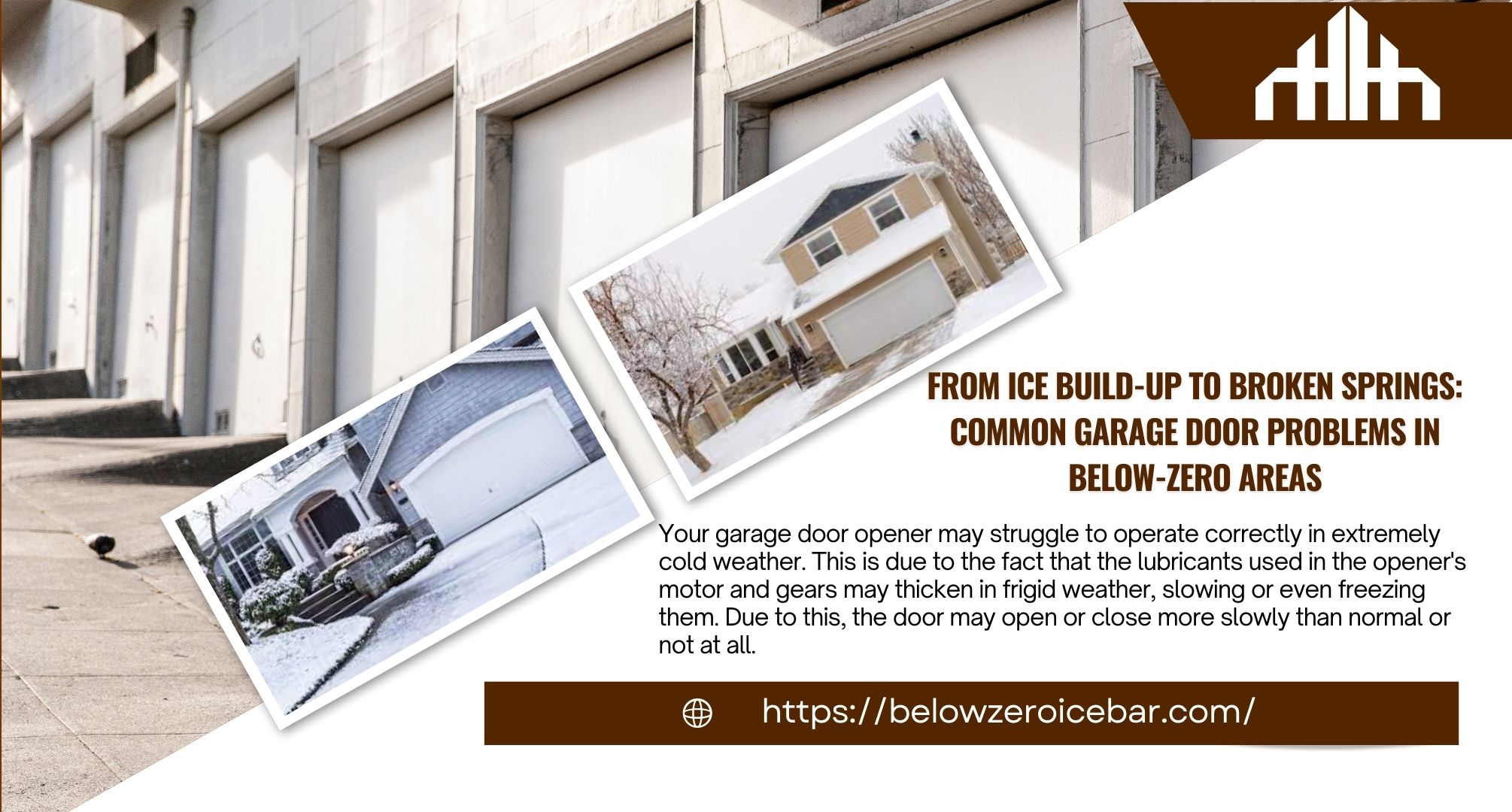Garage doors in sub-zero regions are put to the test as winter arrives and the temperature drops. Extreme weather can cause your garage door system serious damage, ranging from ice build-up to broken springs. It’s crucial to comprehend the typical issues that arise in cold climates and take preventative measures to avoid them if you want to guarantee that your garage door will function correctly throughout the winter.

Tracks of the Garage Door Covered in Ice
In regions with below-freezing temperatures, ice buildup on the rails of garage doors is one of the most typical issues. The door may not open or close correctly if moisture builds up on the tracks and then freezes. The door may even become stuck as a result of this and sustain harm to both the opener and the door.
It’s crucial to maintain your garage door tracks free of any debris, snow, or ice to prevent ice build-up. This can be accomplished by clearing away any extra snow and ice with a brush or shovel before it has a chance to build up. To stop ice from forming, you can also use a unique ice-melt solution made specifically for garage door rails.
Extremely Cold Garage Door Openers Not Working
Your garage door opener may struggle to operate correctly in extremely cold weather. This is due to the fact that the lubricants used in the opener’s motor and gears may thicken in frigid weather, slowing or even freezing them. Due to this, the door may open or close more slowly than normal or not at all.
It’s crucial to routinely lubricate the system’s moving parts to avoid your garage door opener breaking down in bitter cold. In order to prevent the lubricants from thickening and guarantee seamless operation, do this. Use a lubricant created especially for garage doors, or ask a qualified garage door technician for guidance in Danville, CA on the best goods to use.
Broken Springs as a result of Cold Contraction
Broken hinges are another frequent issue that garage doors in subfreezing climates experience. Due to the fact that metal contracts in extremely cold temperatures, your garage door system’s springs are more likely to become brittle and shatter. Broken springs can make it difficult for your garage door to open or close correctly and even harm the door and opener.
It’s crucial to spend money on an insulated garage door to avoid broken springs during extremely frigid weather. Insulated doors can keep your garage door system operating correctly in cold climates because they are made to endure extreme temperatures. In order to conduct routine maintenance on your system and replace any worn or damaged parts, you can also contact a qualified garage door technician.
Garage Door Misalignment as a Result of Temperature Changes
Your garage door may become out of alignment due to temperature changes, making it difficult to open or close. This can happen when your garage door’s metal parts expand and compress as a result of temperature changes, throwing the door out of alignment.
It’s crucial to keep the climate in your garage constant in order to avoid misalignment in your garage door system. To accomplish this, insulate your garage door and make sure your garage is correctly sealed to keep out drafts. In order to perform regular maintenance on your system and make any necessary changes, you can also speak with a qualified garage door technician.
Weatherstripping and Seals that are Broken
Your garage door’s seals and weatherstripping are intended to keep out the elements and stop air leakage. Weatherstripping and seals may deteriorate in extremely cold weather, allowing cold air to enter your garage and reducing the efficacy of your insulation.
It’s crucial to regularly check your weatherstripping and seals and replace any worn or damaged components to avoid damage. To strengthen the seals around your garage door and avoid leaks, you can also use a sealant or weatherstripping tape.



